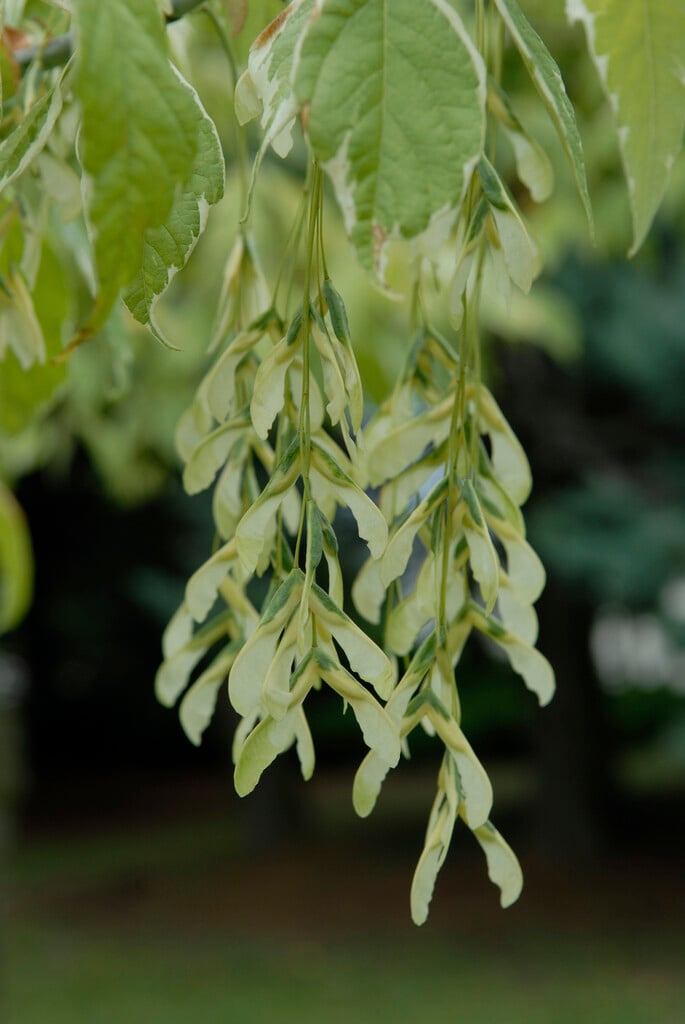Acer negundo 'Variegatum' (v)
box elder 'Variegatum'
A deciduous, fast-growing, upright tree about 15m tall, with pinnate leaves, to 20cm long composed of bright green leaflets, broadly margined white and turning yellow in autumn. Racemes of greenish-yellow flowers are produced in spring, males and females on separate plants
Size
Ultimate height
Higher than 12 metresTime to ultimate height
10–20 yearsUltimate spread
4–8 metresGrowing conditions
Moisture
Moist but well–drained, Well–drainedpH
Acid, Alkaline, NeutralColour & scent
| Stem | Flower | Foliage | Fruit | |
| Spring | Green Yellow | Green White Variegated | ||
|---|---|---|---|---|
| Summer | Green White Variegated | |||
| Autumn | Yellow | |||
| Winter |
Position
- Full sun
- Partial shade
Aspect
East–facing or South–facing or West–facing
Exposure
Sheltered Hardiness
H6Botanical details
- Family
- Sapindaceae
- Native to GB / Ireland
- No
- Foliage
- Deciduous
- Habit
- Spreading branched
- Genus
Acer can be deciduous trees or large shrubs with paired, often palmately-lobed leaves and small flowers followed by characteristic winged fruits. Many have fine autumn colour, and some have ornamental stems
- Name status
Accepted
How to grow
Cultivation
Grow in fertile, moist but well-drained soil in sun or partial shade. See tree cultivation for further advice
Propagation
Propagate by layering in autumn, grafting in late winter or softwood cuttings in early summer
Suggested planting locations and garden types
- Cottage and informal garden
Pruning
Pruning group 1, if necessary, from late autumn to midwinter only. Carefully remove shoots showing signs of reversion, as seen
Pests
May be susceptible to Acer gall mite, aphids, caterpillars and horse chestnut scale
Diseases
May be susceptible to Verticillium wilt, Acer leaf scorch and honey fungus
Get involved
The Royal Horticultural Society is the UK’s leading gardening charity. We aim to enrich everyone’s life through plants, and make the UK a greener and more beautiful place.
